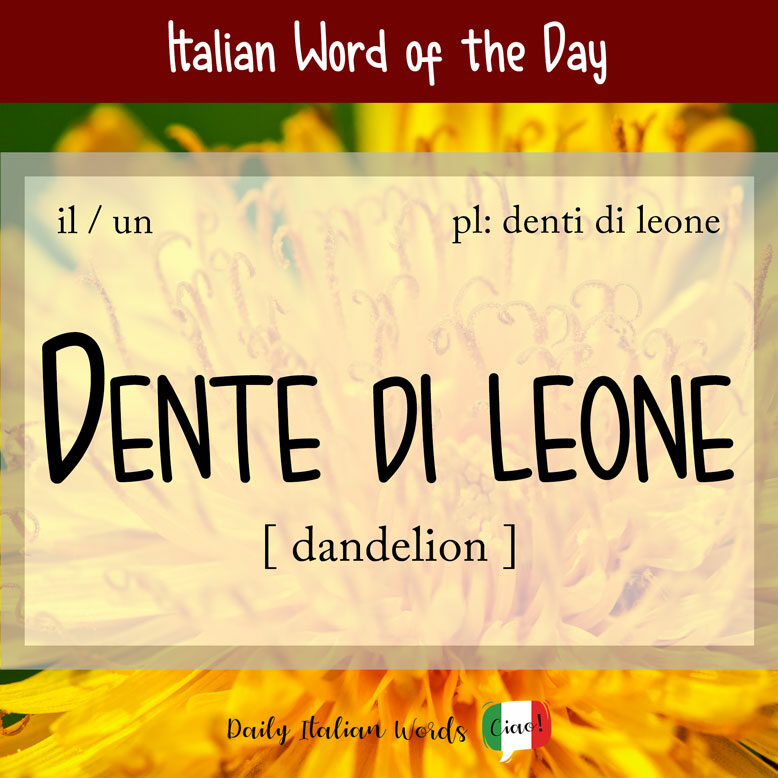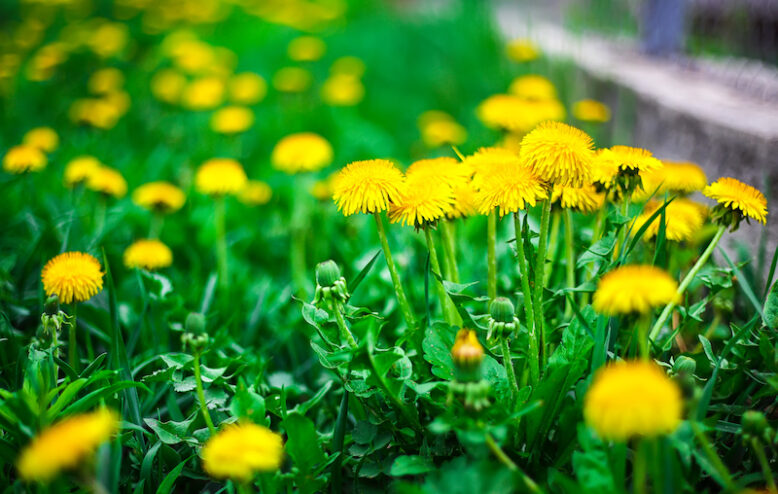One of the words for a dandelion in Italian is dente di leone. However, it is also known by a number of other names including insalata matta (literally ‘crazy salad’), soffione (literally ‘big blower’ due to the fluffy white head of seeds that can be easily blown off) and dente di cane (literally ‘dog’s tooth). (If you’re interested, you can see a full list of names here!)
The official scientific term is tarassaco comune. It comes from the name of the Taraxacum genus,of which the dandelion is a member.
dente di leone
dandelion

Dente di leone is a masculine noun, and its plural form is denti di leone.
il dente di leone
the dandelion
un dente di leone
a dandelion
i denti di leone
the dandelions
dei denti di leone
(some) dandelions
Il dente di leone è una pianta comune che possiede numerose proprietà benefiche.
The dandelion is a common plant that has numerous healthy properties.

In medieval Latin, the plant was known as dens leonis (literally ‘lion’s tooth’) because of the jagged shape of the leaves. Both dandelion and dente di leone owe their origin to this word, although the former entered the English language via the French dent-de-lion.
I was surprised to learn that denti di leone are nutritionally denser than il cavolo verza (kale) or gli spinaci (spinach)! Not only are they rich in vitamin A, vitamin C, potassium, phosphorus, and iron, but a half-cup of dandelion greens has more calcium than un bicchiere di latte (a glass of milk)! (Source: Garden Therapy)

Heather Broster is a graduate with honours in linguistics from the University of Western Ontario. She is an aspiring polyglot, proficient in English and Italian, as well as Japanese, Welsh, and French to varying degrees of fluency. Originally from Toronto, Heather has resided in various countries, notably Italy for a period of six years. Her primary focus lies in the fields of language acquisition, education, and bilingual instruction.


